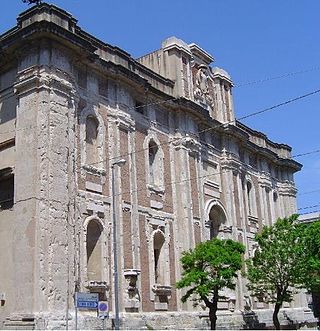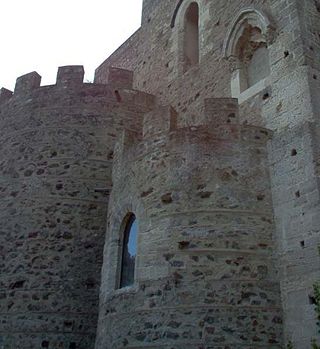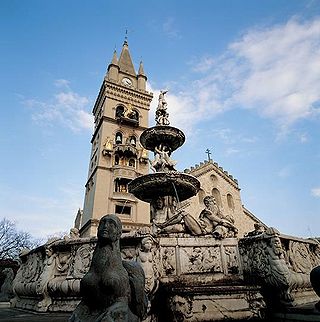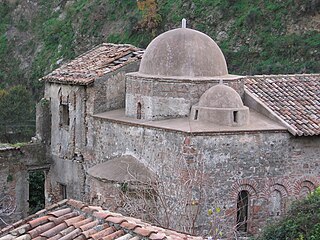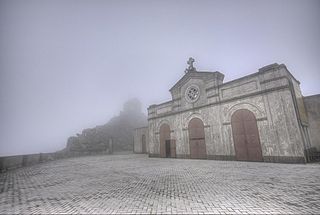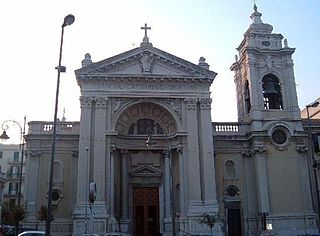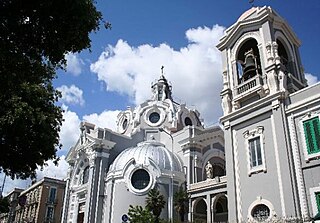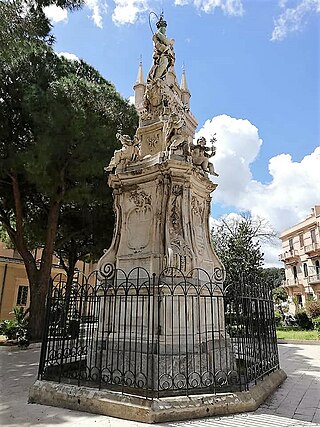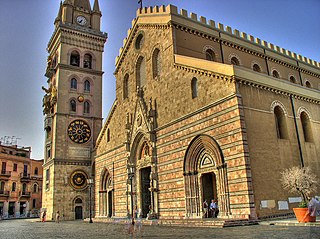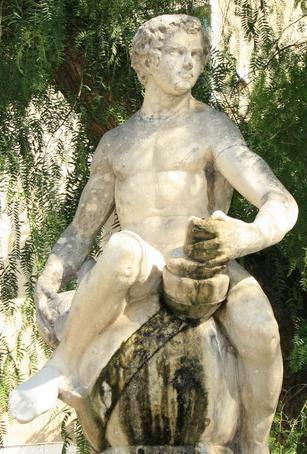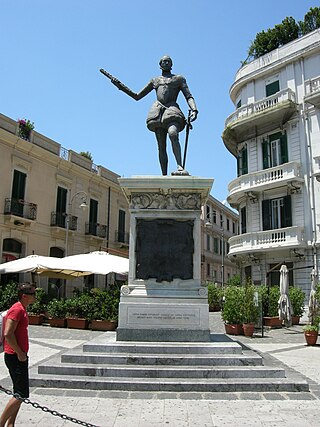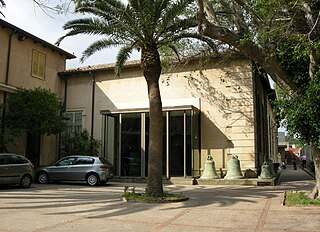12 Sights in Messina, Italy (with Map and Images)
Legend
Welcome to your journey through the most beautiful sights in Messina, Italy! Whether you want to discover the city's historical treasures or experience its modern highlights, you'll find everything your heart desires here. Be inspired by our selection and plan your unforgettable adventure in Messina. Dive into the diversity of this fascinating city and discover everything it has to offer.
Sightseeing Tours in MessinaActivities in Messina1. Chiesa di San Giovanni Gerosolimitano di Malta
The Jerusalem and Palatine Church of San Giovanni di Malta - San Placido e Compagni Martiri is a place of worship in Messina located in Via San Giovanni di Malta. Belonging to the Archdiocese of Messina-Lipari-Santa Lucia del Mela, vicariate of Messina Centro under the patronage of Our Lady of the Letter. It was once a Benedictine abbey, first built in Sicily.
2. Chiesa di Santa Maria della Valle
The church of Santa Maria della Valle, known as La Badiazza, is a religious building in Messina located in the bed of the Badiazza stream called "a' ciumara" or the river, three miles outside the city of Messina, along the pass route of the Peloritani mountains at the foot of the San Rizzo hills.
Wikipedia: Chiesa di Santa Maria della Valle (Messina) (IT), Website
3. Fontana di Orione
The Fountain of Orion is a monumental fountain in Messina created by Giovanni Angelo Montorsoli, dating back to 1553 and executed in collaboration with Domenico Vanello, it is located in Piazza Duomo.
4. Monastero di Santa Maria di Mili
The Norman church of Santa Maria di Mili is one of the oldest testimonies of Norman religious architecture in Sicily and the city of Messina. The church, with the adjoining former monastery, stands on the left bank of the Mili stream near the town of Mili San Pietro, in the municipality of Messina.
5. Santuario di Dinnammare
The sanctuary of the Madonna di Dinnammare stands on the top of the mountain of the same name, 1127 meters high, which is part of the Peloritani mountain chain. The name Dinnammare derives from the Latin term "bimaris", since from its summit it is possible to enjoy the view of the two seas, the Ionian and the Tyrrhenian. Other studies attribute its meaning as purely Arabic, deriving in fact from Dinammar composed of din combined with a proper name, 'Ammar, a frequent name in medieval documents, the ancient owner of those places therefore '(land given) in reward to 'Ammar'. From the square of the church you can admire the city of Messina in all its grandeur and the strait in its majesty. Turning your gaze to the Tyrrhenian side, it is possible to observe the bay of Milazzo and the volcanic Aeolian Islands.
Wikipedia: Santuario della Madonna di Dinnammare (IT), Website
6. Chiesa di Santa Caterina di Valverde
The church of Santa Caterina di Valverde, also the church of Santa Caterina Vergine e Martire, is a place of worship in Messina located in Via Centonze near Via Garibaldi. Belonging to the archdiocese of Messina-Lipari-Santa Lucia del Mela, vicariate of Messina Centro under the patronage of the Madonna della Lettera, archpriesthood of Messina, parish of Santa Caterina di Valverde.
7. Chiesa del Carmine
The "Sanctuary of Our Lady of Mount Carmel", better known as Carmine Church, is a Roman Catholic church in Via Porta Imperiale, Messina, Sicily. It replaces the former church, which was razed by the 1908 Messina earthquake. Located close to the Tribunal, the Carmine Church was rebuilt in 1930 in the eighteenth century Baroque or Rococo style. Designed by the architect Cesare Bazzani, the church was reconsecrated on 15 July 1931.
8. Colonna dell'Immacolata
The column of the Immaculate Conception or statue of the Immaculate Conception or spire of the Immaculate Conception or obelisk of the Immaculate Conception is a monument of Messina located in Piazza dell'Immacolata familiarly known and called in the city as Piazza Immacolata di Marmo, located on the north side of the cathedral behind the bell tower.
9. Duomo di Messina
Messina Cathedral is a Roman Catholic cathedral located in Messina, Sicily. Formerly the episcopal seat of the Diocese of Messina, it became in 1986 the archiepiscopal seat of the Archdiocese of Messina-Lipari-Santa Lucia del Mela.
10. Fontana di Gennaro
The Aquarium Fountain - popularly called the fountain of Gennaro - is a monument in Messina, dating back to the early seventeenth century. Initially located at the intersection of the Corso and Via del Collegio, it is now located in the square of the same name, between Corso Cavour and Via XXIV Maggio. After restoration work, in 2015 it was returned to the view of the city.
11. Don Giovanni d'Austria
John of Austria or Don Giovanni d'Austria is a monumental sculpture in bronze, originally gilded, of John of Austria by architect and sculptor Andrea Calamech, a native of Carrara who trained in the Florentine workshop of Bartolomeo Ammannati. Its erection was decided by the Senate of Messina in 1571 to honor the victor of the Battle of Lepanto, from which many Messineses had benefited, and it was dedicated in 1572. William Stirling-Maxwell called it "one of the most effective monuments of sixteenth-century art". On the sides of the pedestal are bronze plaques depicting the fleet, the battle, and the fleet's victorious return to Messina as well as an inscription. John is figured holding a three-pronged baton in reference to his command of the triple alliance of Philip II, the Pope, and the Republic of Venice, with his foot on the severed head of a vanquished Turk generally considered to be Müezzinzade Ali Pasha.
12. Museo Regionale di Messina
The Museo Interdisciplinare Regionale (MuMe). or Regional Museum of Messina (Italian - Museo regionale interdisciplinare di Messina), is an art museum located on the northern coast of the city of Messina, Sicily, Italy. MuMe illustrates the development of art and culture in Messina from the 12th to the 18th centuries, with outstanding figures such as the renowned artists Andrea della Robbia, Antonello da Messina, Girolamo Alibrandi, Caravaggio (Michelangelo Merisi), and Polidoro da Caravaggio.
Wikipedia: Interdisciplinary Regional Museum of Messina (EN), Website
Share
How likely are you to recommend us?
Disclaimer Please be aware of your surroundings and do not enter private property. We are not liable for any damages that occur during the tours.
